ISSN ONLINE(2319-8753)PRINT(2347-6710)
ISSN ONLINE(2319-8753)PRINT(2347-6710)
V. Lakshmana Rao1, P.Satish2
|
| Related article at Pubmed, Scholar Google |
Visit for more related articles at International Journal of Innovative Research in Science, Engineering and Technology
Local topography plays a very important role in the dispersal of pollutants. It is worth mentioning here that a coastal station, Visakhapatnam recorded very high concentrations in April in spite of higher mixing, which is because of its basin-like topographical structure confined by two ranges of hills. In this article an attempt is made to calculate the morning (minimum) mixing heights for winter, pre-monsoon, monsoon and post-monsoon seasons. In this study a comparison is made within the pollutants (SPM, SO2, and NOx) concentrations. February recorded peak concentration and April recorded minimum value. If a comparison is made as season wise winter season recorded maximum concentrations and followed by post monsoon season, summer season respectively. In this article we observed that the maximum concentrations are occurring within a distance of 100 m.
Keywords |
| Pollutants, Coastal station, mixing heights. |
INTRODUCTION |
| Mixing heights may be defined as the height above the ground to which releases pollutants will extend primarily through action of atmospheric turbulent (Stern 1976).Mixing height having time and space variations, which varies from one to several kilometers in thickness is of particular importance in vertical diffusion of pollutants (Munn,1976).Mixing height varies hourly, seasonally and annually. This is also influenced by the abnormal conditions of atmosphere like inversions and isotherms. Holtzworth (1967) introduced the concept of mixing height, which is very useful in determining the pollution potential of a particular region. According to him the mixing height is that height in the atmosphere in to which the pollutants are stirred and mixed thoroughly, causing dilution of the pollutants. The more is the mixing height the less is the ground concentration of the pollutants. The mixing height is dependent upon the surface temperature, and the higher the temperature the greater the mixing. In urban areas because of their excessive heat the mixing height is greater than that in rural areas. Therefore, the mixing height is very important because it determines the dilution or building up of pollutants. The importance of mixing height was brought to light by the pioneering work of Holtzworth. He calculated the mean maximum and minimum mixing heights for 62 stations in contiguous United States (Holtzworth, 1964a).The product of mixing height and mean wind speed through the mixing column is the ventilation coefficient. It indicates the advection of pollutants. In India mixing heights were calculated by number of researchers (e.g., Padmanabhamurty and Mandal, 1979; Vittal Murthy et al., 1980).This kind of study was carried out for major urban centers in India by Vittal Murthy et al. (1980).Viswanadham (1980).Sadhuram (1982), Satyanarayana (1986) and Peddiraju and Vittal Murthy (1994).Sadhuram (1982) has computed mixing heights over Visakhapatnam and analyzed in detail. There estimated and procedure are according to Holtzworth (1964a). |
II DATA AND METHODOLOGY |
| Unpleasant flumes and odors reduced visibility, injured to human health, crops and forms of vegetation by noxious pollutants and damage to property by dust particles and corrosive gases rank among the major environmental problems of urban and industrialized areas and their surroundings the fact was through with Visakhapatnam (17° 42’N: 82°18’E) a highly industrialized coastal metropolitan city on the east coast of India. Here in this study we taken major air pollutants are SPM (Suspended Particulate Matter), SO2 and NOx in different regions in the Visakhapatnam urban region those are Mindi (BHPV), IE Marripalem (Industrial), Police Barracks (Transportation typical month of the season such as January (winter), April (summer), August (monsoon) and October(post monsoon) for morning wind speeds with Gaussian Flume model (GPM- MMH- MWS).), Gnanapuram (Industrial area), Veerabahu (INS- Kalinga) and Seetammadhara (Domestic area) in the year 2013. In this article data collected for to study the mixing heights in the morning time. |
III RESULTS AND DISCUSSIONS |
Gaussian Box Model-Morning Mixing Heights-Morning Wind Speeds (GBM-MMH-MWS) |
| In stability A, it is observed that the maximum concentrations are occurring within a distance of 100 m. Thereafter, there is a drastic decrease in the concentration, when the downwind from the source is 200 m. The rapid decrease of concentration continued up to 800m.From 800 m to 200 m, the concentration is decreasing at a slow rate. From 2000 m onwards the rata of decrease is small. The peak concentrations for SPM in the month of January in stability A, is around 4486.For the same month B stability, the peak concentration is 6374, which is greater than the concentration of A stability. In C stability, the peak concentration increase further to a value of 9317.D, E, F, stabilities showed peak concentration 15140, 20187, 40374 respectively. From this example, one can easily infer that the peak concentration increase in their value from A to F stability. This gradual increase with minimum mixing heights i.e., in the morning was observed in all the months February to December. It is equally interesting to note that the distance downwind from the source where the ground concentrations shows a peak value is constant irrespective of the pollutant for which we estimated the value (SO2, NOx, or SPM) and the concentration occur within first 100 m unlike Gaussian Plume Model .When a comparison is made within the concentrations, February recorded peak concentration and April recorded minimum value. If a comparison is made as season wise winter season recorded maximum concentrations and followed by post monsoon season, summer season respectively. The peak concentrations in the descending order of the twelve months are as follows February, January, December, September, March, November, October, August, July, June, May, April. The similar trend is followed for the pollutants SO2 and NOx in all the stabilities for all the twelve months. The estimated concentrations for the pollutants SPM, SO2 and NOx in different stabilities (A, B, C, D, E, F) for all the twelve months are discussed. |
IV SUMMARY AND CONCLUSIONS |
| Gaussian box with morning (minimum) mixing heights and morning (minimum) wind speeds (GBM-MMH-MWS) estimated high concentrations in all the stabilities (A-F) for all the pollutants (SPM, SO2, and NOx) for all the twelve months. GBM-MMH-MWS estimated high concentrations in February and low concentrations in April .The range of mixing heights was high for inland stations and low for coastal stations. This was well marked in April. The spatial distribution of mixing heights suggests that extreme northern portions are pollution-prone areas because of the low mixing in these regions except for April. |
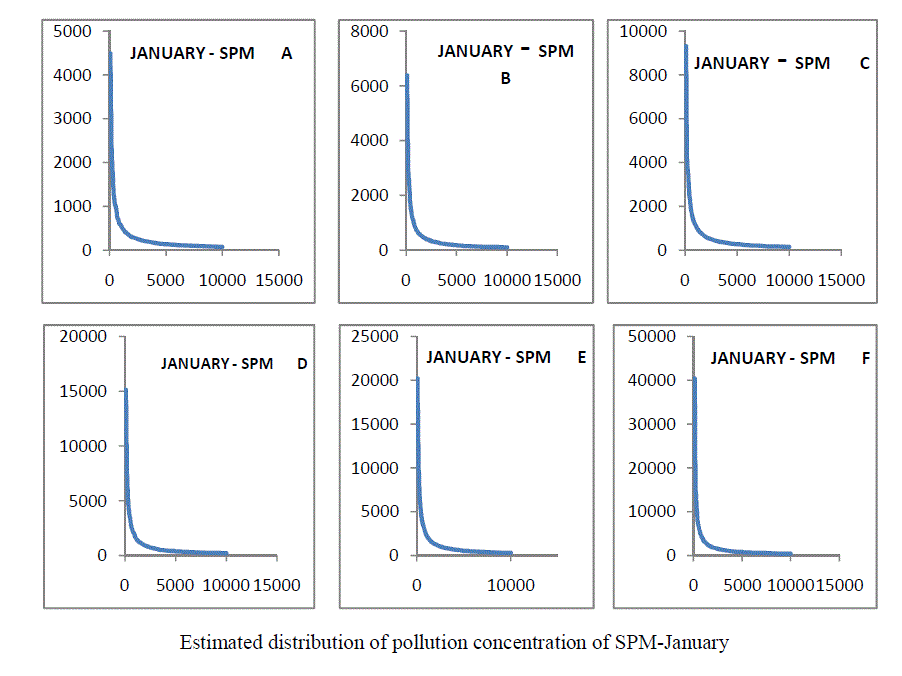 |
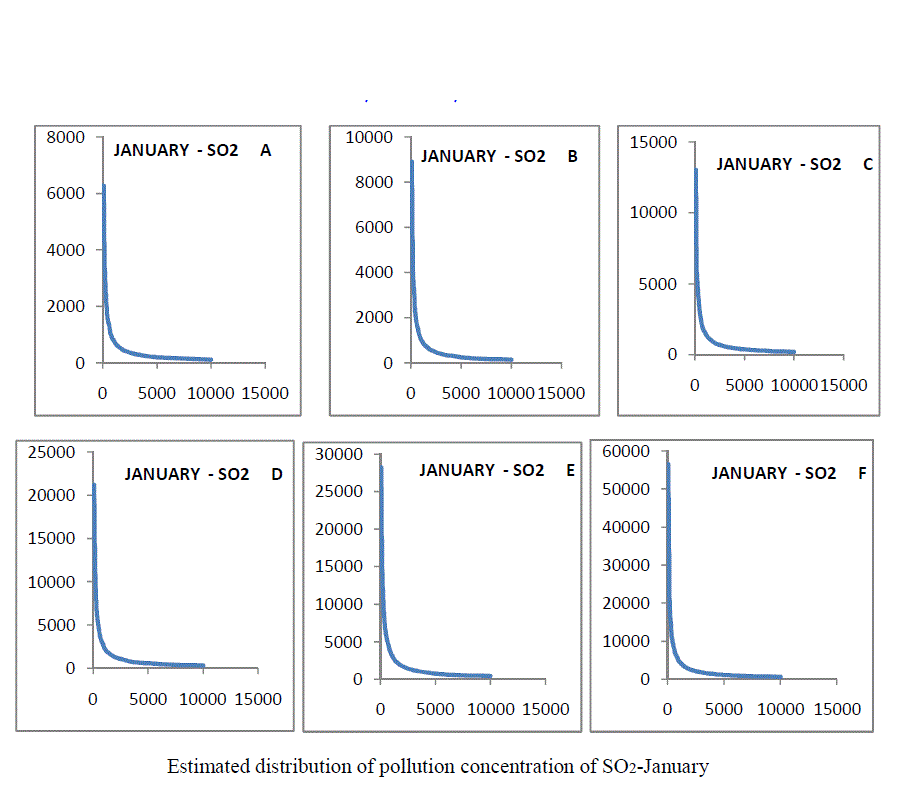 |
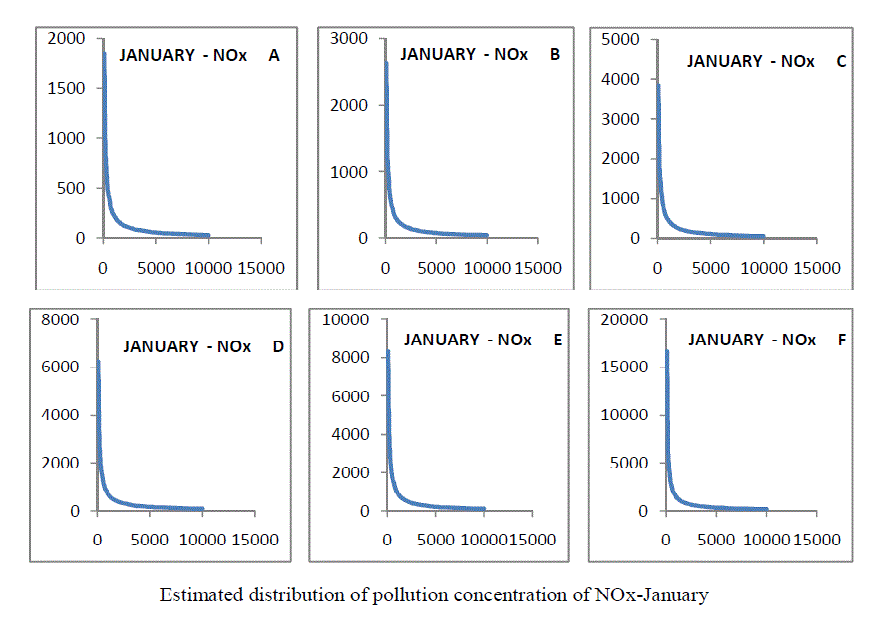 |
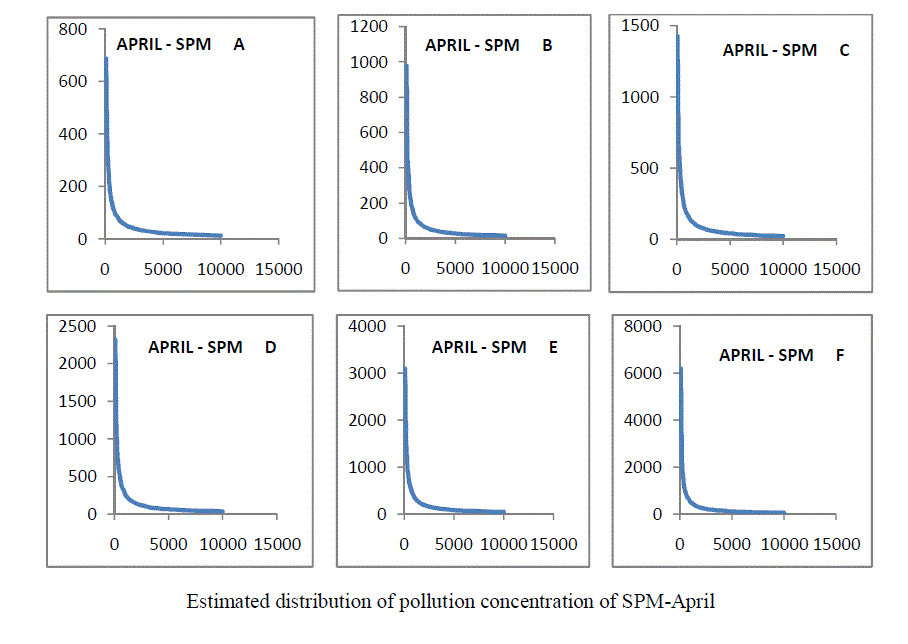 |
 |
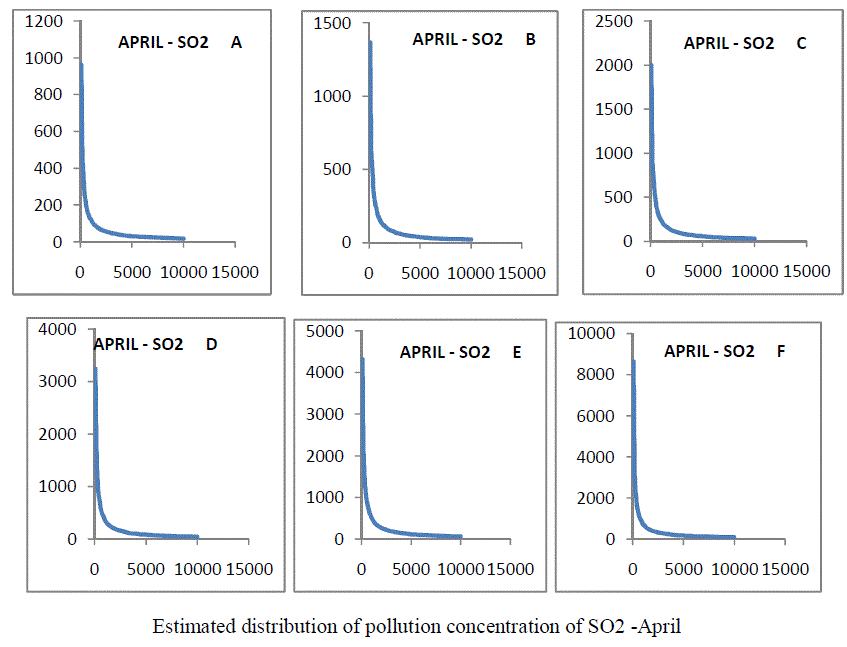 |
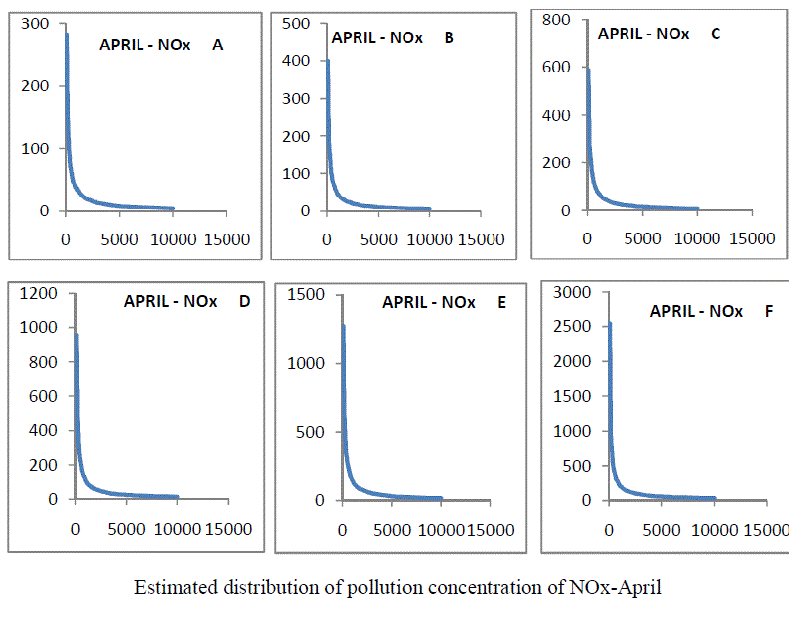 |
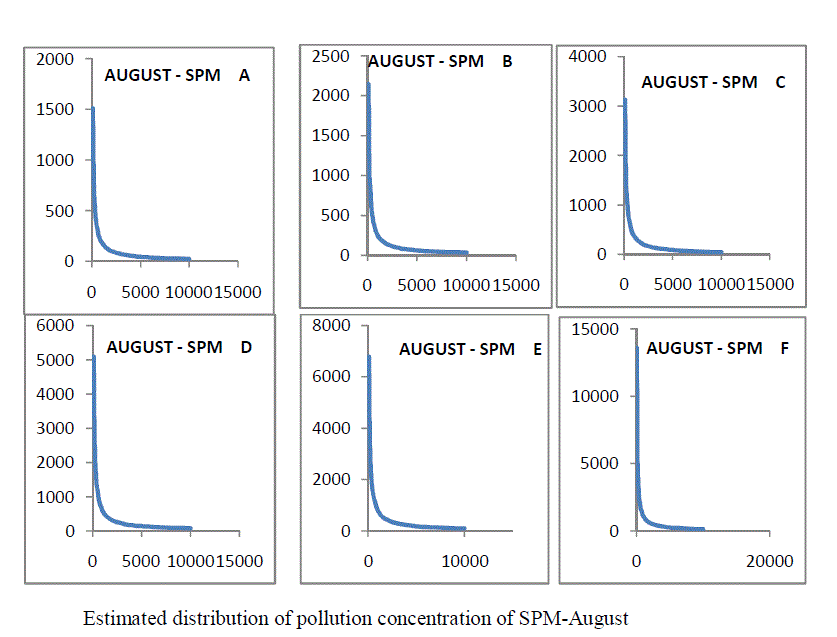 |
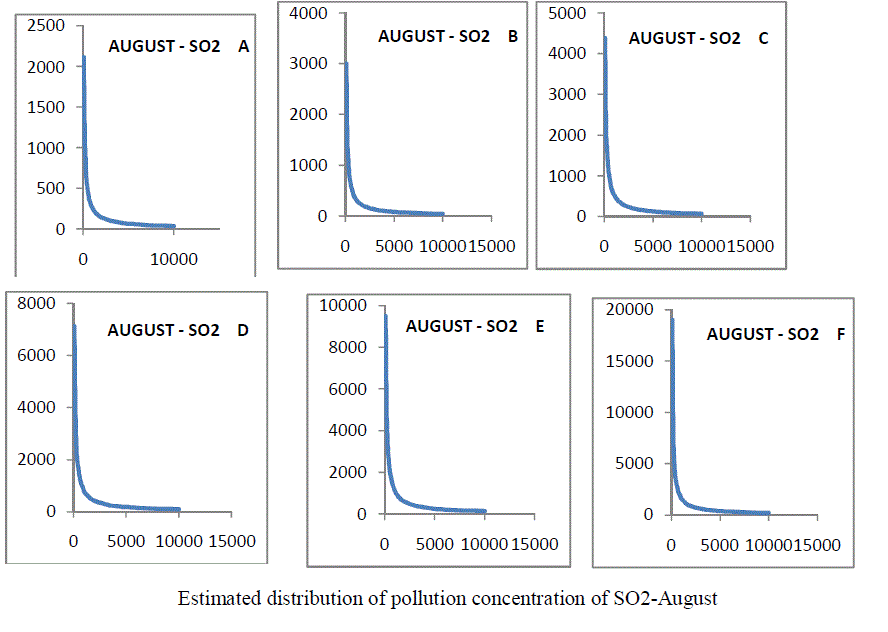 |
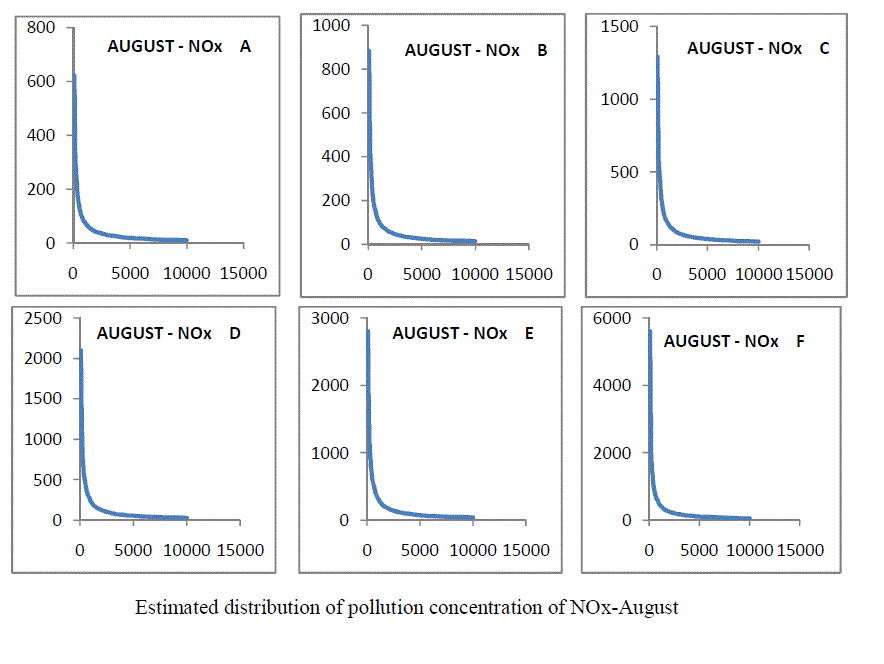 |
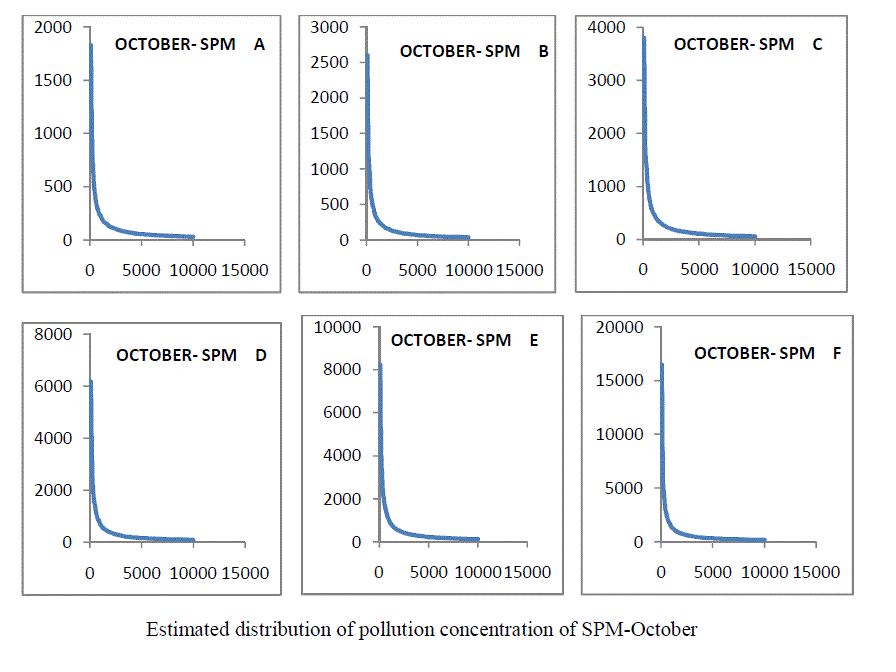 |
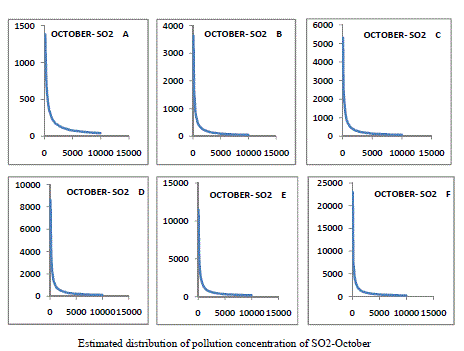 |
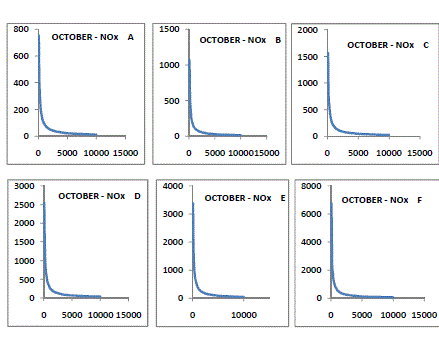 |
References |
|